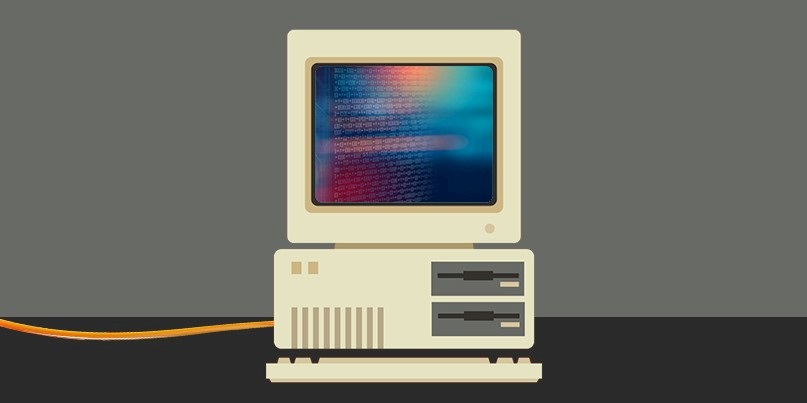Web security concerns brought to the fore amidst celebrations

Today (March 12), the World Wide Web celebrates its 30th birthday.
Sir Tim Berners-Lee submitted his proposal for would become the web in March 1989, while working at the European Organization for Nuclear Research, also known as CERN.
Mike Sendall, Sir Tim's boss, described the initial proposal for an information management system as “vague but exciting”, which was encouragement enough for Sir Tim to continue developing his Hypertext Transfer Protocol (HTTP) client and server technology and associated Hypertext Markup Language (HTML) – both of which were famously released royalty-free.
Whole industries have grown on the back of the innovation, and the way that people communicate with each other and with businesses has been transformed, almost beyond recognition.
Internet pioneer Vint Cerf speculated that the net might have evolved much more slowly if it weren’t for the creation of the web
He told The Daily Swig: “I think the internet’s evolution might have been substantially slower were it not for the World Wide Web and the avalanche of content that it brought, to say nothing of a graphical interface to the internet in the form of MOSAIC initially.”
Cerf, vice president and chief internet evangelist at Google, said that although the internet largely lacked security controls at the time leading up to the inception of the web, there have been many positive gains in cybersecurity over recent years.
“In the original internet design, all hosts were responsible for their security – we did not have firewalls that in some ways allowed organizations with computers on the net to ignore their own vulnerabilities, relying on firewalls that were not always up to the task,” Cerf explained.
“I think we have more security now than before with public key crypto and evolution of new crypto algorithms. Some recent gains include DNSSEC, opportunistic wireless cryptography, two-factor authentication, and encrypted storage among others.”
Security woes
Security problems such as data breaches and personal privacy concerns have long been a problem online. More recently online trolling, bullying, and misinformation spread through social media have become major concerns.
Sir Tim acknowledged these and other problems, noting that the “web is in a constant battle over cybersecurity” in a recent interview with The Washington Post.
In an open letter, Sir Tim talks of three sources of dysfunction affecting today’s web:
- Deliberate, malicious intent, such as state-sponsored hacking and attacks, criminal behavior, and online harassment
- System design that creates perverse incentives such as ad-based revenue models that commercially reward clickbait and the viral spread of misinformation
- Unintended negative consequences of [web] design such as the outraged and polarized tone and quality of online discourse
The web needs a “mid-course correction pointing towards constructiveness, science, facts, and democracy”, according to Sir Tim.
All this might be achieved through a so-called “Contract for the Web”, a project Sir Tim helped to launch last year.
The runaway success of the web was by no means assured at the time it was first conceived. For one thing Gopher, an early distributed hypertext protocol, grew faster than Sir Tim’s HTTP in the early 90s, but the University of Minnesota’s plans to charge licensing fees for Gopher resulted in a decisive switch over to http and in favor of a royalty-free web.
Scalability remained a concern into the mid 1990s.
Ethernet inventor Bob Metcalfe predicted that the internet would suffer a “catastrophic collapse” in 1995, promising to eat his words if history proved him wrong. In 1997, he did just that.
Metcalfe took a printed copy of his column predicting the net’s collapse, put it in a blender, and added liquid before eating the resulting (pulpy) mass at the International World Wide Web Conference.
Black mirror
Mikko Hypponen, chief research officer at F-Secure, told The Daily Swig that the initial optimism heralded by the web has been supplanted by a dystopian outlook.
“When the web came around, it felt like a utopia,” Hypponen said. “One world, with no borders. No distances. No geography. It was like a dream. We thought that we would be getting rid of conflicts, as now anybody could be in direct contact with anyone else.”
Hypponen continued: “By now, we’ve woken up. In many ways, the dream has turned into a nightmare.
“A nightmare where online criminals have global access to victims anywhere on the planet. A nightmare where foreign spies monitor our behavior. A nightmare where Silicon Valley giants build detailed dossiers of our preferences and sell them to highest bidders.
“A nightmare where elections are won and lost with online influence campaigns. A nightmare where addicted users sit on Facebook 24 hours a day, clicking the refresh button.”
“By now, we’ve realized the web was not a utopia. It’s a reflection of ourselves, and it does not look pretty,” he added.
Celebrations kicked off at CERN this morning, where Sir Tim was joined by a lineup of speakers to reflect on the impact the web has had worldwide.
The event is being live streamed as part of a 30-year web retrospective, due to take place over the next 30 hours.
The event moves from CERN near Geneva, Switzerland, to London’s Science Museum later today for an evening event before finishing in Lagos, Nigeria, tomorrow (Wednesday).
In Lagos, Sir Tim and Web Foundation co-founder Rosemary Leith will visit the Women’s Technology Empowerment Centre, which works to nurture the next generation of female technology entrepreneurs and engineers.
Netizens are also being invited to contribute to a crowdsourced Twitter timeline of the web’s most important milestones, using the hashtags #Web30 and #ForTheWeb.






